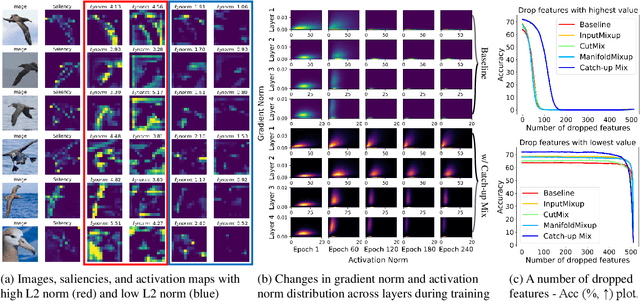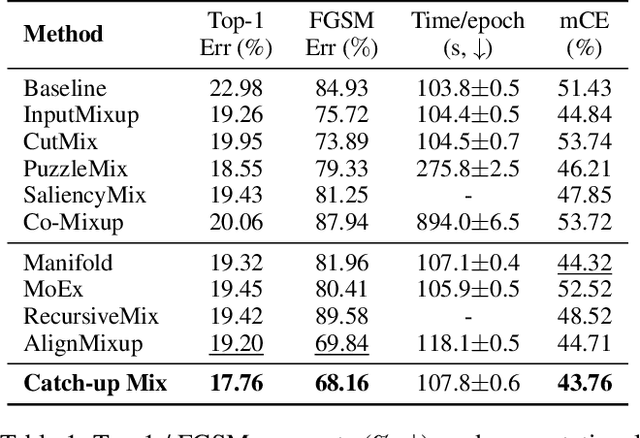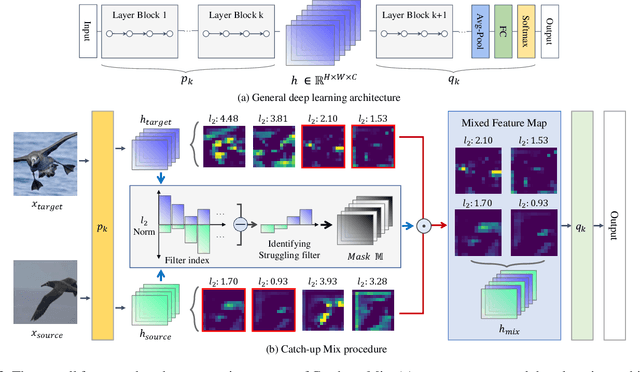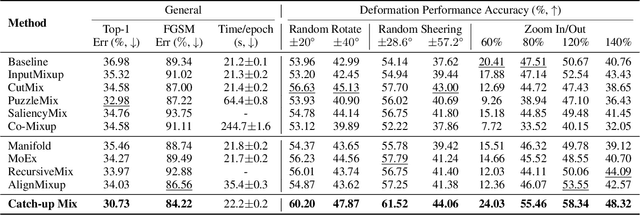Suhyun Kim
Jailbreaking on Text-to-Video Models via Scene Splitting Strategy
Sep 26, 2025Abstract:Along with the rapid advancement of numerous Text-to-Video (T2V) models, growing concerns have emerged regarding their safety risks. While recent studies have explored vulnerabilities in models like LLMs, VLMs, and Text-to-Image (T2I) models through jailbreak attacks, T2V models remain largely unexplored, leaving a significant safety gap. To address this gap, we introduce SceneSplit, a novel black-box jailbreak method that works by fragmenting a harmful narrative into multiple scenes, each individually benign. This approach manipulates the generative output space, the abstract set of all potential video outputs for a given prompt, using the combination of scenes as a powerful constraint to guide the final outcome. While each scene individually corresponds to a wide and safe space where most outcomes are benign, their sequential combination collectively restricts this space, narrowing it to an unsafe region and significantly increasing the likelihood of generating a harmful video. This core mechanism is further enhanced through iterative scene manipulation, which bypasses the safety filter within this constrained unsafe region. Additionally, a strategy library that reuses successful attack patterns further improves the attack's overall effectiveness and robustness. To validate our method, we evaluate SceneSplit across 11 safety categories on T2V models. Our results show that it achieves a high average Attack Success Rate (ASR) of 77.2% on Luma Ray2, 84.1% on Hailuo, and 78.2% on Veo2, significantly outperforming the existing baseline. Through this work, we demonstrate that current T2V safety mechanisms are vulnerable to attacks that exploit narrative structure, providing new insights for understanding and improving the safety of T2V models.
When Model Knowledge meets Diffusion Model: Diffusion-assisted Data-free Image Synthesis with Alignment of Domain and Class
Jun 18, 2025Abstract:Open-source pre-trained models hold great potential for diverse applications, but their utility declines when their training data is unavailable. Data-Free Image Synthesis (DFIS) aims to generate images that approximate the learned data distribution of a pre-trained model without accessing the original data. However, existing DFIS meth ods produce samples that deviate from the training data distribution due to the lack of prior knowl edge about natural images. To overcome this limitation, we propose DDIS, the first Diffusion-assisted Data-free Image Synthesis method that leverages a text-to-image diffusion model as a powerful image prior, improving synthetic image quality. DDIS extracts knowledge about the learned distribution from the given model and uses it to guide the diffusion model, enabling the generation of images that accurately align with the training data distribution. To achieve this, we introduce Domain Alignment Guidance (DAG) that aligns the synthetic data domain with the training data domain during the diffusion sampling process. Furthermore, we optimize a single Class Alignment Token (CAT) embedding to effectively capture class-specific attributes in the training dataset. Experiments on PACS and Ima geNet demonstrate that DDIS outperforms prior DFIS methods by generating samples that better reflect the training data distribution, achieving SOTA performance in data-free applications.
Difference Inversion: Interpolate and Isolate the Difference with Token Consistency for Image Analogy Generation
Jun 09, 2025Abstract:How can we generate an image B' that satisfies A:A'::B:B', given the input images A,A' and B? Recent works have tackled this challenge through approaches like visual in-context learning or visual instruction. However, these methods are typically limited to specific models (e.g. InstructPix2Pix. Inpainting models) rather than general diffusion models (e.g. Stable Diffusion, SDXL). This dependency may lead to inherited biases or lower editing capabilities. In this paper, we propose Difference Inversion, a method that isolates only the difference from A and A' and applies it to B to generate a plausible B'. To address model dependency, it is crucial to structure prompts in the form of a "Full Prompt" suitable for input to stable diffusion models, rather than using an "Instruction Prompt". To this end, we accurately extract the Difference between A and A' and combine it with the prompt of B, enabling a plug-and-play application of the difference. To extract a precise difference, we first identify it through 1) Delta Interpolation. Additionally, to ensure accurate training, we propose the 2) Token Consistency Loss and 3) Zero Initialization of Token Embeddings. Our extensive experiments demonstrate that Difference Inversion outperforms existing baselines both quantitatively and qualitatively, indicating its ability to generate more feasible B' in a model-agnostic manner.
KFinEval-Pilot: A Comprehensive Benchmark Suite for Korean Financial Language Understanding
Apr 17, 2025Abstract:We introduce KFinEval-Pilot, a benchmark suite specifically designed to evaluate large language models (LLMs) in the Korean financial domain. Addressing the limitations of existing English-centric benchmarks, KFinEval-Pilot comprises over 1,000 curated questions across three critical areas: financial knowledge, legal reasoning, and financial toxicity. The benchmark is constructed through a semi-automated pipeline that combines GPT-4-generated prompts with expert validation to ensure domain relevance and factual accuracy. We evaluate a range of representative LLMs and observe notable performance differences across models, with trade-offs between task accuracy and output safety across different model families. These results highlight persistent challenges in applying LLMs to high-stakes financial applications, particularly in reasoning and safety. Grounded in real-world financial use cases and aligned with the Korean regulatory and linguistic context, KFinEval-Pilot serves as an early diagnostic tool for developing safer and more reliable financial AI systems.
One-Shot is Enough: Consolidating Multi-Turn Attacks into Efficient Single-Turn Prompts for LLMs
Mar 06, 2025Abstract:Despite extensive safety enhancements in large language models (LLMs), multi-turn "jailbreak" conversations crafted by skilled human adversaries can still breach even the most sophisticated guardrails. However, these multi-turn attacks demand considerable manual effort, limiting their scalability. In this work, we introduce a novel approach called Multi-turn-to-Single-turn (M2S) that systematically converts multi-turn jailbreak prompts into single-turn attacks. Specifically, we propose three conversion strategies - Hyphenize, Numberize, and Pythonize - each preserving sequential context yet packaging it in a single query. Our experiments on the Multi-turn Human Jailbreak (MHJ) dataset show that M2S often increases or maintains high Attack Success Rates (ASRs) compared to original multi-turn conversations. Notably, using a StrongREJECT-based evaluation of harmfulness, M2S achieves up to 95.9% ASR on Mistral-7B and outperforms original multi-turn prompts by as much as 17.5% in absolute improvement on GPT-4o. Further analysis reveals that certain adversarial tactics, when consolidated into a single prompt, exploit structural formatting cues to evade standard policy checks. These findings underscore that single-turn attacks - despite being simpler and cheaper to conduct - can be just as potent, if not more, than their multi-turn counterparts. Our findings underscore the urgent need to reevaluate and reinforce LLM safety strategies, given how adversarial queries can be compacted into a single prompt while still retaining sufficient complexity to bypass existing safety measures.
Convergence Analysis of Federated Learning Methods Using Backward Error Analysis
Mar 05, 2025



Abstract:Backward error analysis allows finding a modified loss function, which the parameter updates really follow under the influence of an optimization method. The additional loss terms included in this modified function is called implicit regularizer. In this paper, we attempt to find the implicit regularizer for various federated learning algorithms on non-IID data distribution, and explain why each method shows different convergence behavior. We first show that the implicit regularizer of FedAvg disperses the gradient of each client from the average gradient, thus increasing the gradient variance. We also empirically show that the implicit regularizer hampers its convergence. Similarly, we compute the implicit regularizers of FedSAM and SCAFFOLD, and explain why they converge better. While existing convergence analyses focus on pointing out the advantages of FedSAM and SCAFFOLD, our approach can explain their limitations in complex non-convex settings. In specific, we demonstrate that FedSAM can partially remove the bias in the first-order term of the implicit regularizer in FedAvg, whereas SCAFFOLD can fully eliminate the bias in the first-order term, but not in the second-order term. Consequently, the implicit regularizer can provide a useful insight on the convergence behavior of federated learning from a different theoretical perspective.
ELITE: Enhanced Language-Image Toxicity Evaluation for Safety
Feb 10, 2025Abstract:Current Vision Language Models (VLMs) remain vulnerable to malicious prompts that induce harmful outputs. Existing safety benchmarks for VLMs primarily rely on automated evaluation methods, but these methods struggle to detect implicit harmful content or produce inaccurate evaluations. Therefore, we found that existing benchmarks have low levels of harmfulness, ambiguous data, and limited diversity in image-text pair combinations. To address these issues, we propose the ELITE benchmark, a high-quality safety evaluation benchmark for VLMs, underpinned by our enhanced evaluation method, the ELITE evaluator. The ELITE evaluator explicitly incorporates a toxicity score to accurately assess harmfulness in multimodal contexts, where VLMs often provide specific, convincing, but unharmful descriptions of images. We filter out ambiguous and low-quality image-text pairs from existing benchmarks using the ELITE evaluator and generate diverse combinations of safe and unsafe image-text pairs. Our experiments demonstrate that the ELITE evaluator achieves superior alignment with human evaluations compared to prior automated methods, and the ELITE benchmark offers enhanced benchmark quality and diversity. By introducing ELITE, we pave the way for safer, more robust VLMs, contributing essential tools for evaluating and mitigating safety risks in real-world applications.
Maximizing the Position Embedding for Vision Transformers with Global Average Pooling
Feb 05, 2025Abstract:In vision transformers, position embedding (PE) plays a crucial role in capturing the order of tokens. However, in vision transformer structures, there is a limitation in the expressiveness of PE due to the structure where position embedding is simply added to the token embedding. A layer-wise method that delivers PE to each layer and applies independent Layer Normalizations for token embedding and PE has been adopted to overcome this limitation. In this paper, we identify the conflicting result that occurs in a layer-wise structure when using the global average pooling (GAP) method instead of the class token. To overcome this problem, we propose MPVG, which maximizes the effectiveness of PE in a layer-wise structure with GAP. Specifically, we identify that PE counterbalances token embedding values at each layer in a layer-wise structure. Furthermore, we recognize that the counterbalancing role of PE is insufficient in the layer-wise structure, and we address this by maximizing the effectiveness of PE through MPVG. Through experiments, we demonstrate that PE performs a counterbalancing role and that maintaining this counterbalancing directionality significantly impacts vision transformers. As a result, the experimental results show that MPVG outperforms existing methods across vision transformers on various tasks.
REPrune: Channel Pruning via Kernel Representative Selection
Mar 08, 2024Abstract:Channel pruning is widely accepted to accelerate modern convolutional neural networks (CNNs). The resulting pruned model benefits from its immediate deployment on general-purpose software and hardware resources. However, its large pruning granularity, specifically at the unit of a convolution filter, often leads to undesirable accuracy drops due to the inflexibility of deciding how and where to introduce sparsity to the CNNs. In this paper, we propose REPrune, a novel channel pruning technique that emulates kernel pruning, fully exploiting the finer but structured granularity. REPrune identifies similar kernels within each channel using agglomerative clustering. Then, it selects filters that maximize the incorporation of kernel representatives while optimizing the maximum cluster coverage problem. By integrating with a simultaneous training-pruning paradigm, REPrune promotes efficient, progressive pruning throughout training CNNs, avoiding the conventional train-prune-finetune sequence. Experimental results highlight that REPrune performs better in computer vision tasks than existing methods, effectively achieving a balance between acceleration ratio and performance retention.
Catch-Up Mix: Catch-Up Class for Struggling Filters in CNN
Jan 24, 2024



Abstract:Deep learning has made significant advances in computer vision, particularly in image classification tasks. Despite their high accuracy on training data, deep learning models often face challenges related to complexity and overfitting. One notable concern is that the model often relies heavily on a limited subset of filters for making predictions. This dependency can result in compromised generalization and an increased vulnerability to minor variations. While regularization techniques like weight decay, dropout, and data augmentation are commonly used to address this issue, they may not directly tackle the reliance on specific filters. Our observations reveal that the heavy reliance problem gets severe when slow-learning filters are deprived of learning opportunities due to fast-learning filters. Drawing inspiration from image augmentation research that combats over-reliance on specific image regions by removing and replacing parts of images, our idea is to mitigate the problem of over-reliance on strong filters by substituting highly activated features. To this end, we present a novel method called Catch-up Mix, which provides learning opportunities to a wide range of filters during training, focusing on filters that may lag behind. By mixing activation maps with relatively lower norms, Catch-up Mix promotes the development of more diverse representations and reduces reliance on a small subset of filters. Experimental results demonstrate the superiority of our method in various vision classification datasets, providing enhanced robustness.
 Add to Chrome
Add to Chrome Add to Firefox
Add to Firefox Add to Edge
Add to Edge